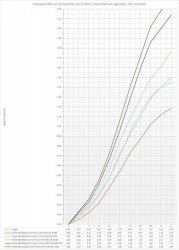I saw that previously Ian, but was hoping someone else would try it before i jumped in
£7.80 with the same for postage (plus customs?) means it's not cheap either. I placed an order with Silverprint to make my own (based on Sandy King's formula) but after placing the order, they called to tell me the Pyro was no longer available.
I may just give it a try now that my darkroom is fully up and running.
Mike
MIke...
Surviving on my pension income I have found that 'making up Pyrocat HD from 'scratch" is a LOT less expensive than purchasing it 'READY' to go..... i used 'HER' inexpensive Kitchen scale until got a 'real bargain' on a three-beam balance (accurate to a 1/10th of gram with all the required 'counter weights'). In all honesty, I will do not think i will ever go back to 'commercial' developers purchased 'off the shelf'
I Really believe the grain is 'sharper' and... (somehow much "finer').. thus so it has become the only film developer in my darkroom
It is also 'really' helpful for making up my own 'alternative' archaic print processes 'emulsions' from the early 1800's. which is my main means of making prints from my slightly enlaged digital negatives printed onto the slightly frosted side of "Pictorico' "over-head projection film"
Ken


